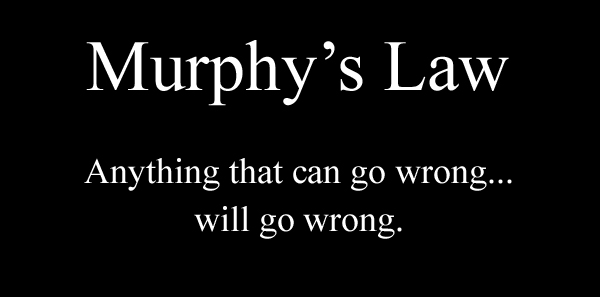Introduction
Murphy’s Law, often stated as “Anything that can go wrong, will go wrong,” is a well-known mental model that reflects the pervasive nature of uncertainty in our lives. This concept acknowledges the inevitability of unforeseen events and their potential to disrupt our plans and decisions. Anchored in human psychology, Murphy’s Law is highly relevant in decision-making processes, reminding us to consider potential setbacks and contingencies. In this blog post, we will explore the psychology behind Murphy’s Law, examine real-life examples, uncover underlying biases, and provide practical strategies to help readers mitigate its impact and make more resilient decisions.
Understanding Murphy’s Law
Murphy’s Law captures the essence of unexpected events and the potential for things to not go as planned. It recognizes the limitations of our ability to predict and control the future. By acknowledging the existence of uncertainties and the possibility of negative outcomes, we can adopt a more realistic and prepared mindset in decision-making processes.
Examples of Murphy’s Law
Personal Life Decisions:
Imagine an individual planning a dream vacation. They meticulously organize flights, accommodations, and activities. However, unforeseen circumstances such as flight cancellations or natural disasters disrupt their plans, causing stress and disappointment. By not considering the potential for setbacks, they may fail to allocate adequate time, resources, or backup options, leading to a compromised travel experience.
Business Scenarios:
In the business world, Murphy’s Law can manifest in various ways. For instance, a company launching a new product may encounter unexpected production delays, supply chain disruptions, or unfavorable market conditions. If the business fails to anticipate and prepare for these contingencies, they may face financial losses, reputational damage, or missed market opportunities.
Public Policy-Making:
Governments and policymakers often encounter unforeseen challenges when implementing policies. For instance, an environmental policy aimed at reducing carbon emissions may face resistance or encounter unintended consequences. Failure to consider potential counterproductive behaviors or adaptability may result in policy failures or unintended negative outcomes.
Mental Biases and Psychological Underpinnings:
Several cognitive biases contribute to the occurrence of Murphy’s Law. The Planning Fallacy, where individuals tend to underestimate the time and resources required for a task or project, can lead to inadequate preparations and increased vulnerability to setbacks. Optimism bias, a tendency to overestimate the likelihood of positive outcomes and underestimate risks, can blind individuals to potential pitfalls.
Moreover, the Certainty Effect, which emphasizes a preference for known outcomes over uncertain ones, can lead individuals to overlook or downplay potential risks. Loss aversion bias, where individuals feel the impact of losses more strongly than gains, may also discourage individuals from adequately preparing for potential negative outcomes.
Identifying and Avoiding Murphy’s Law:
To navigate Murphy’s Law, it is essential to adopt a proactive and resilient mindset. Here are practical strategies to help readers mitigate its impact:
Conduct comprehensive risk assessments: Identify potential risks and uncertainties associated with your decisions. Assess their likelihood and potential impact. Consider alternative scenarios and develop contingency plans to address potential setbacks.
Embrace flexibility and adaptability: Recognize that change is inevitable. Maintain a flexible mindset that allows for adjustments and adaptations in the face of unexpected events. Consider building in buffers or safety margins to accommodate unforeseen circumstances.
Seek diverse perspectives and feedback: Engage with others who have relevant expertise or experiences to gain valuable insights and identify potential blind spots. Encouraging constructive criticism and open dialogue can help uncover potential risks and generate innovative solutions.
Learn from past experiences: Reflect on past instances where Murphy’s Law may have affected your decisions. Identify patterns, lessons learned, and strategies that proved effective in mitigating negative impacts. Incorporate these insights into your decision-making processes.
Conclusion
Murphy’s Law reminds us of the inherent uncertainties in life and decision-making. By acknowledging the potential for things to go wrong, we can better prepare ourselves and make more resilient choices. While we cannot eliminate uncertainty entirely, awareness and proactive strategies can help us navigate and mitigate its impact. By conducting risk assessments, embracing flexibility, seeking diverse perspectives, and learning from past experiences, we can make decisions that are more robust, adaptive, and aligned with our long-term goals.
